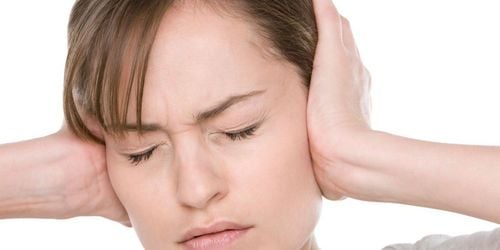This is an automatically translated article.
Tritasdine is indicated in the prevention of angina in patients with ischemic heart disease, in combination in the treatment of tinnitus, dizziness, vision loss and visual disturbances due to circulatory origin. Let's learn about the uses and notes when using Tritasdine through the article below.1. Uses of the drug Tritasdine
Tritasdine medicine contains the active ingredient Trimetazidine 20mg, which is prepared in the form of film-coated tablets.
Trimetazidine stabilizes the energy of cells in the presence of systemic hypoxia or ischemia, prevents ischemic electrophysiological manifestations, and simulates ST segment elevation in the electrocardiogram. chart in animal studies. Trimetazidine belongs to the class of anti-anginal and anti-ischemic drugs that do not cause any hemodynamic changes, improving myocardial ischemia. The effect of treating symptoms of angina pectoris through a direct protective effect on myocardial cells, thereby helping to avoid adverse effects such as excessive peripheral vasodilation, left ventricular insufficiency...
Drugs Tritasdine is indicated in the following cases:
Prophylaxis of angina in ischemic patients; Coordinate in the treatment of symptoms of tinnitus, dizziness; Combination in the treatment of visual impairment and visual disturbances of circulatory origin.
2. Dosage of the drug Tritasdine
Tritasdine belongs to the group of prescription drugs, the use of Tritasdine and the clinical dose prescribed by the treating doctor.
Some recommendations on the dosage of Tritasdine 20mg are as follows:
Treatment of coronary insufficiency: Take 1 tablet/time x 3 times/day with meals. The dose can then be reduced to twice a day depending on the patient's condition; Coordination in the treatment of eye and ear department: Take 1 capsule/time x 2-3 times/day with meals. Note: The dosage shown above is for reference only. The patient should take the medicine according to the dose and duration prescribed by the doctor.
3. Tritasdine side effects
Tritasdine can cause some side effects as follows:
Common: Gastrointestinal disturbances, vomiting, nausea, headache and dizziness; Rare: Spasticity, tremor, difficulty moving... These side effects will go away when Tritasdine is stopped. Patients should inform their doctor if they experience any side effects during treatment with Tritasdine.
4. Precautions when using Tritasdine
4.1. Contraindications The use of Tritasdine is contraindicated in the following cases:
Patients with hypersensitivity to Trimetazidine or any of its ingredients; Patients with heart failure, heart failure. 4.2. Precautions for use Tritasdine should not be used in patients with ongoing chest pain or in the initial treatment of unstable angina. Do not use Tritasdine in the treatment of myocardial infarction. For pregnant and lactating women: Trimetazidine is contraindicated in these subjects.
5. Drug interactions
Drug interactions occur that increase the risk of having an effect and reduce the therapeutic effect of Tritasdine. Therefore, to ensure safety and effectiveness in treatment, patients need to inform their doctor about the drugs and foods they are using before taking Tritasdine.
Above is all information about Tritasdine, patients need to carefully read the instructions for use, consult a doctor / pharmacist before using. Note, Tritasdine is a prescription drug, patients absolutely must not buy and treat at home because they may experience unwanted side effects.













